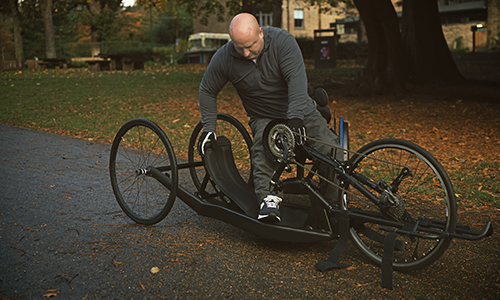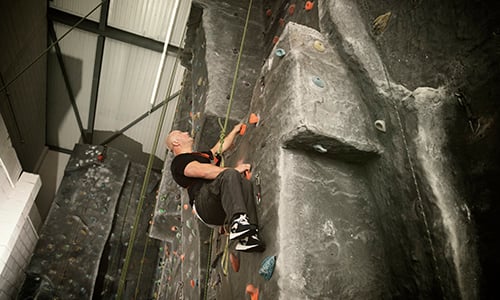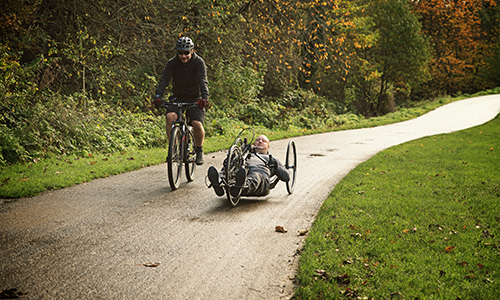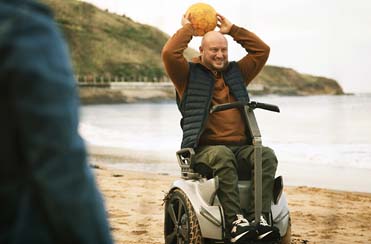Physical activity and exercise can be especially beneficial for people living with a spinal cord injury (SCI).
Multiple studies have shown that physically active people are less likely to experience feelings of anxiety, loneliness, and depression. Besides the risk of chronic health issues such as heart disease, high blood pressure, diabetes, and even some forms of cancer, physical inactivity stemming from an SCI can put you at risk of secondary complications such as urinary tract infections, pressure sores, and respiratory illness. To stay as healthy as possible while living with an SCI, experts recommend a focus on the following:
Body weight1
There are many effective strategies for optimizing your body weight now that you’re likely to expend less energy than before. Your dietary habits may be altered, and the inability to perform exercises using large muscle groups makes it more of a challenge to avoid accumulating excess fat—all of which results in a high prevalence of obesity in those with an SCI. That is why a focus on body weight is critical. But don’t be discouraged. Your healthcare team may suggest getting a trainer. He or she will have a number of solutions to offer. If you need assistance in finding a trainer, a Navigator can help. Most often, trainers will suggest a combination of dietary interventions, aerobic exercise, electrically stimulated resistance training, and behavioral counseling.
Muscular strength/endurance1,2
Before starting any strength and/or endurance regimen, testing may be performed in order to set baseline fitness levels. These include 1-repetition maximum (1RM), 10-repetition maximum (10RM), and isometric testing. The results serve as a guide for designing the right exercise training regimen for each person. A recent study touts the benefits of participating in twiceweekly resistance training (3 sets of 8-10 repetitions) to improve muscular strength. Some people with an SCI rely heavily on their shoulder and arm muscles for mobility and for performing activities of daily living. Resistance training programs should be comprehensive, but an emphasis should be placed on improving strength and endurance of the muscles supporting the scapulae (shoulder blades) and posterior shoulders.2
Flexibility and range of motion2
Flexibility and Range of Motion2 If you are to decrease the risk of injury and maintain mobility going forward, flexibility and adequate range of motion are essential. Attention should be directed toward stretching the chest, shoulders, and biceps since these are the muscles most often used extensively for mobility and may tighten after an SCI. Lower body stretching should also be included, but be careful not to overstretch limbs where sensation is impaired. That could lead to excessive stress on joint structures. The specific muscles to be stretched should be based on individual needs and can be identified with the help of a trained clinician.2
Cardio fitness1
Before any fitness program is undertaken, it is important to make sure that your cardiorespiratory system is up to the challenge. There are numerous tests that can establish a baseline that will indicate the best program for you. Once these considerations are taken into account, you may participate in and benefit from aerobic exercises that include upper extremity resistance training, wheelchair propulsion, swimming, and circuit resistance training, to name a few. Functional electrical stimulation (FES) has proven effective for those with complete paralysis. FES is the application of electrical current to muscles through the use of electrodes attached to the skin. Using FES will create patterned movement in the arms, legs, and trunk. This allows the muscles to work and perform activities despite their weakness or paralysis.
NOTE: The information contained in this article is provided as general information only and is not intended to be medical advice. Ask your healthcare professional for more information.
References:









